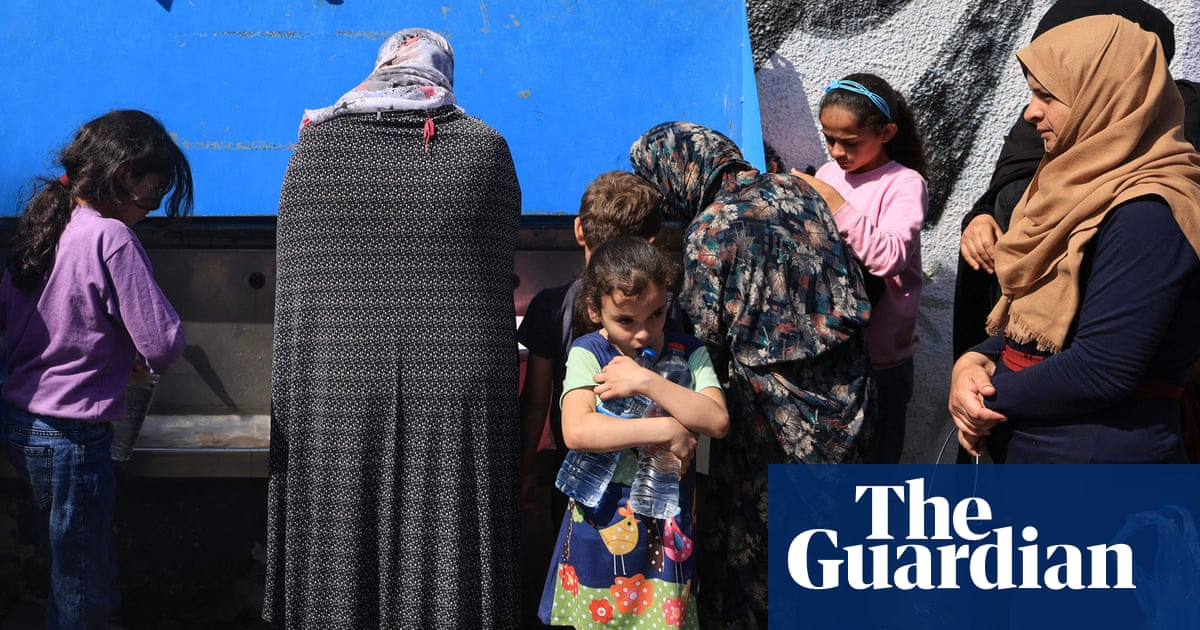The water system in Gaza has deteriorated due to bombings, blockades, and import bans.

Israel’s energy minister declared a complete cut-off of water and power to Gaza, prompting Israeli actor Matanel Laiany to share his thoughts on Instagram.
He posted a reel of water gushing from his luxury mixer tap, cool drinking water pouring from his refrigerator into a beaker until it overflowed, Israel’s television news glimmering from his vast flatscreen television, and his lights turning on and off, over and over, as he repeatedly flicked the switch with a grin.
Soon after sharing his reel, Laiany’s Instagram profile was allegedly deactivated. As of writing this, it has been restored; however, Gaza continues to face issues with access to water and electricity.
According to official reports, the average person living in Israel used 150 liters of water per day for household purposes in 2020. However, the UN Office for the Coordination of Humanitarian Affairs (OCHA) states that 2.2 million residents in Gaza are currently surviving on only three liters of water per day for all their needs, including drinking, cooking, and cleaning.
On Monday Scotland’s first minister, Humza Yousaf, said his in-laws, who are trapped on the strip, were sharing six bottles of water between 100 people. The UN reported that it was providing about one litre of water a day to people at emergency shelters. Residents have reported urinating once a day or less.
Allies of Israel have urged for measures to address the water shortage crisis in Gaza. UK Prime Minister Rishi Sunak and US Secretary of State Antony Blinken have both called for the resumption of water supply to Gaza. However, experts argue that simply turning on the water from Israel or transporting it from Egypt will not be enough to meet the demands of Gaza.
Gaza has been struggling with a complex water crisis for years, even before Israel’s recent bombing campaign that started two and a half weeks ago. The area has long endured inadequate water infrastructure due to years of underdevelopment.
Gaza has never been integrated with Israel’s mains water system. Instead, in times of relative calm, 80% of Gaza’s water came from a part of the coastal aquifer, a massive geological formation that stretches along the eastern Mediterranean coast from northern Egypt through Gaza and into Israel. A further 7% was provided by desalination plants, and 13% was bought from Israel’s state water company, Mekorot, according to Shaddad Attili, a former head of the Palestinian Water Authority.
Prior to the 1990s, the Gaza Strip’s population had access to potable water from the aquifer. However, excessive extraction over the years has resulted in the aquifer becoming tainted with saltwater, as well as pollutants from sewage and agricultural practices. As reported by the Palestinian Central Bureau of Statistics, 97% of this water no longer meets the standards set by the World Health Organization (WHO).
The frequent destruction caused by Israeli airstrikes and restrictions on necessary materials has resulted in Gaza’s piped water system barely functioning. According to a 2022 report from the Al Mezan Center for Human Rights, the majority of people turned to a network of approximately 100 privately owned water desalination plants. These plants would draw water from various wells across the area, treat it, and sell it to customers for around $7 per 1,000 liters. Customers would then store the water in tanks in their homes.
However, this water may still be dangerous. According to Al Mezan, only 50% of private desalination plants have a valid license. In 2021, the Gaza Ministry of Health conducted chemical testing and found that 8 out of 38 samples did not meet Palestinian standards. Microbiological tests revealed the presence of coliform bacteria, including fecal coliform bacteria. Additionally, the UN Development Programme reported in 2020 that 26% of childhood illnesses in Gaza were linked to water.
Israel’s ongoing occupation and blockade of Gaza have caused numerous issues, including the inability to access crucial components needed for repairing and maintaining the area’s fresh and wastewater networks, as well as desalination facilities.
Due to the recent escalation of violence in Gaza by Israel, the basic water supply has been completely destroyed. This was triggered by Hamas’ attack on Israeli communities near the territory’s fence on October 7. As a result, all three of Gaza’s main desalination plants and pumping stations for its water system are no longer functioning. According to Attili, the head of Gaza’s water utility, this has also led to the shutdown of all sewage treatment plants, causing an estimated 130,000 cubic metres of raw sewage to be dumped into the Mediterranean Sea, posing a major threat to the well-being of the people, groundwater, and marine life.
Monther Shoblaq, the leader of Gaza’s water supply company, stated that the average daily water supply from all sources was 300,000 cubic meters before the current bombardment. Due to the intense and sudden shelling, it is not possible to accurately determine the extent of damage to the infrastructure. However, multiple facilities have been reported as damaged and some are not functioning. Additionally, numerous household connections have also been affected.
Since Saturday, the Rafah crossing from Egypt has been used to deliver aid to Palestinians, including a small supply of bottled water. The UN agency for Palestinian refugees, UNRWA, reported that nine water wells are currently pumping 11,000 cubic metres of water daily. Israel is also providing some water to the southern region of Gaza, but without pumping stations, the limited resources can only reach a few nearby districts near the border.
The Gaza water system requires fuel as its top priority. However, Israel has restricted imports of fuel, resulting in the inability to pump water from wells and operate desalination plants. The lack of fuel has also led to the announcement by UNRWA that it will have to cease operations in the strip by Wednesday night.
According to the World Health Organization (WHO), the current water production in Gaza is only 5% of its normal levels. This severe shortage has created a humanitarian crisis that extends beyond just thirst. The Office for the Coordination of Humanitarian Affairs (OCHA) reported this past weekend that there has been an increase in cases of chickenpox, scabies, and diarrhea, which can be attributed to the inadequate sanitation conditions and consumption of unsafe water sources.
Without access to electricity or fuel, the rate of these illnesses is predicted to increase if measures are not taken to restore water and sanitation services.
Source: theguardian.com

